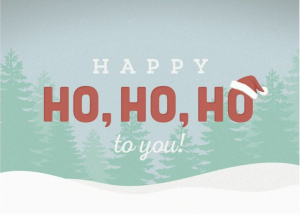
Christmas cards can be beautiful without spending a fortune. Here are nine tips to ensure your stationery cost stays within your budget.
1. Come directly to your printer
Stationery stores are a great starting place for ideas, but they have large markups on the paper and printing. A designer, too, will be much more expensive than if you went straight to a printer. Some print shops have an in-house designer, but you can also get crafty and design your own Christmas cards. Sites like Wedding Paper Divas, Printable Press and E.M. Papers will help you create pretty designs yourself.
2. Know all details before coming to a printer
If you do decide to use an in-house graphic designer at a print shop, know all the details before you come in. It does not help you to give the designer half the information earlier. Most designers bill by the hour, and if he or she has to go back and add or change details, it will cost you.
3. Choose house paper
Some customers want a particular paper to make their Christmas cards extra special. However, most printers already house nice papers. Felt and linen paper are two popular options because they have a classic look and feel. If a printer has to order a different paper, it will cost more. Also, many times, the “special papers” are way over-priced. Ask your printer what kind of paper they house before you tell them what kind of paper you want. They might even have some leftover samples that will cut your cost significantly.
4. Stick with standard-size Christmas cards
Postage costs can add up quickly. Stick with a standard-size card (length divided by height is less than 1.3 or more than 2.5) to save money. Square letters cost more because they don’t fit through the postal machines and have to be hand-stamped. On a similar note, avoid adding additional frills, clasps, string or buttons to the envelope. Don’t include items that make the envelope surface uneven, and avoid rigid items such as wood or metal. These things will increase postage cost.
5. Use flat Christmas cards
Most people choose between two different types of Christmas cards: flat and folded. As you can probably imagine, folded cards are more expensive because it is twice as much paper.
6. Order extras
There will inevitably be a friend or two you forgot or want to your list last-minute. Save yourself the time and money by printing a few extra holiday cards to avoid ordering a second print job. It’s always nice to have an extra card for scrapbooks or memorabilia.
7. Take advantage of technology
Digital and offset printing cost much less than letterpress and engraving. Embossing and foil-stamping is beautiful, but is much more labor-intensive than modern printing techniques, and therefore more expensive. Use a digital printer if you are printing hundreds of cards. Use an offset printer if you are printing more than 5,000 (which — kudos to you if you have 5,000 friends or clients!).
8. Write and stamp the Christmas cards yourself
Most print shops can mail your Christmas cards for you, as well as customize the recipient and return addresses. This costs more — especially the stamping. Most printers hand-stamp each card, which is time- and labor-intensive. Stamp your holiday cards yourself and handwrite each address. It will add a personal touch and won’t break the bank.
9. Proofread!
Finally, proofread! Proofread! Proofread! Reprinting your Christmas cards will cost you a fortune.
For holiday card design ideas, visit our Pinterest page. We have many designs that we have printed throughout the years.

